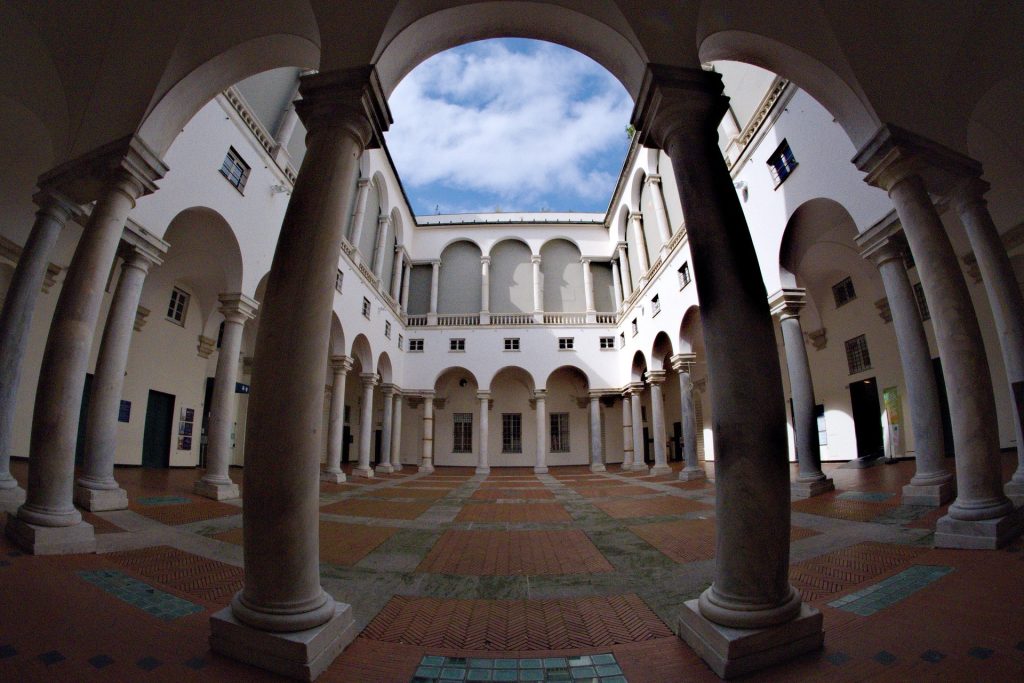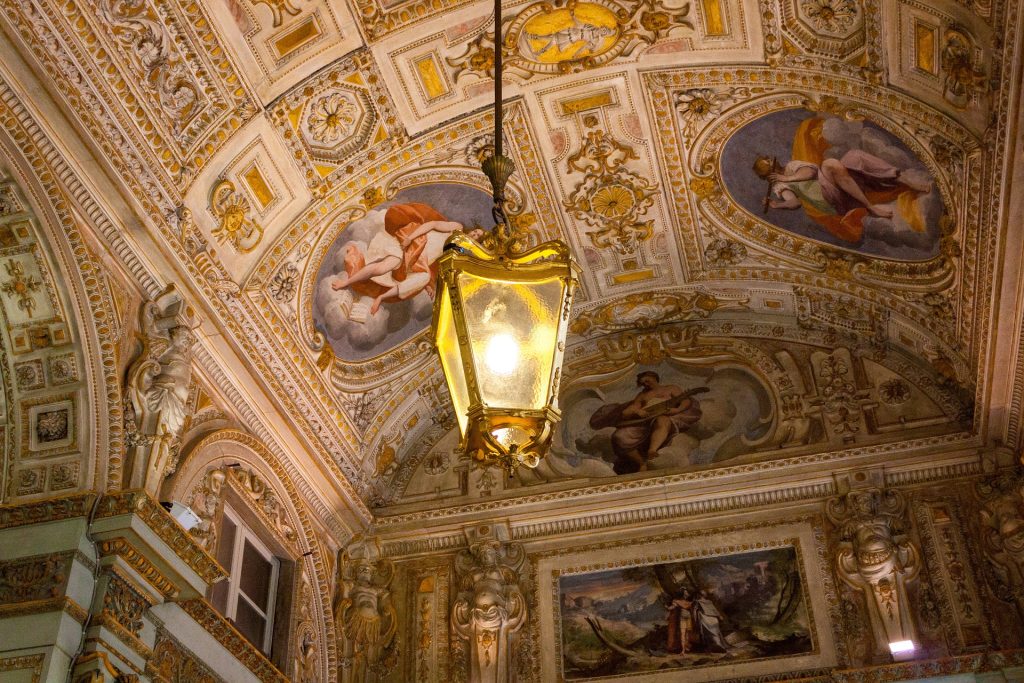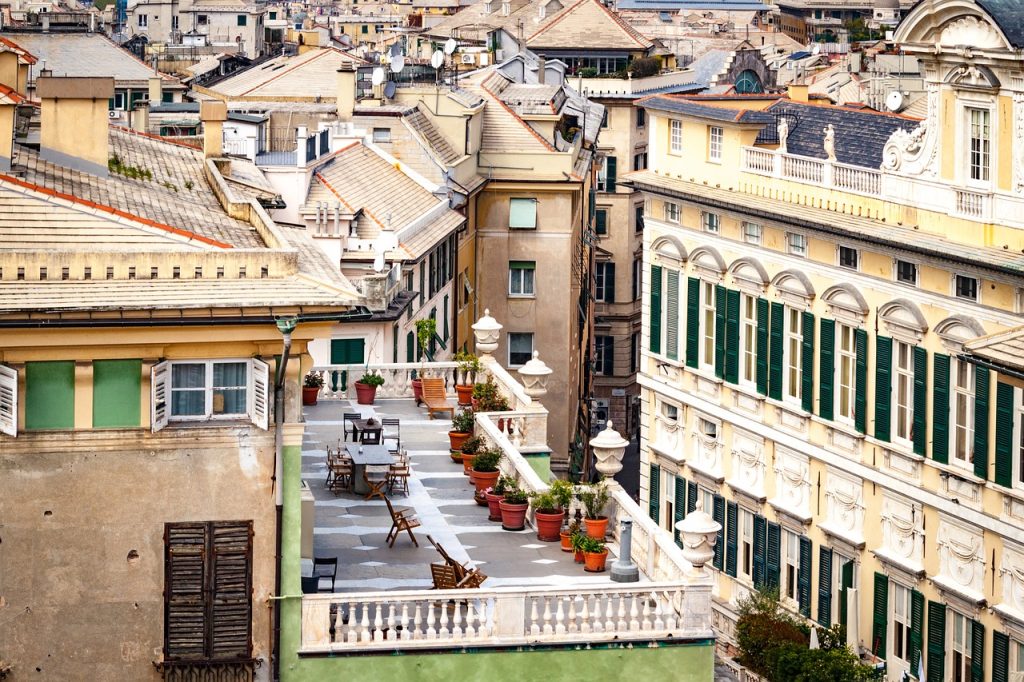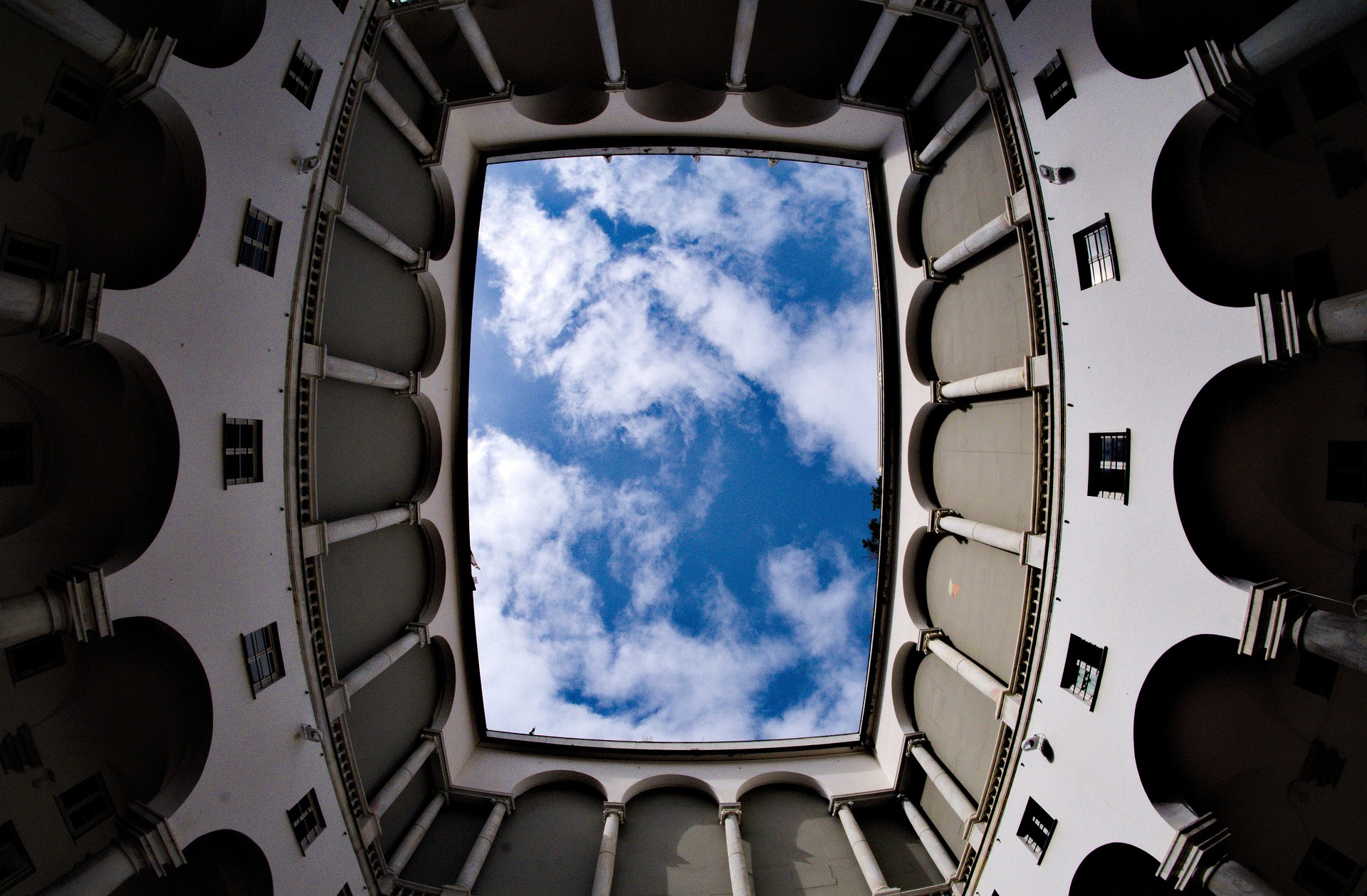Perhaps you are planning a visit to Genoa in the coming weeks, perhaps you are passing through
Liguria with your boat and will moor in our tourist marina, or maybe you are already in
Genoa, and you want some more information about these stunning historic buildings before
encountering them on your tour downtown. In any case, here you will find a rich introduction to the Palazzi dei
Rolli of Genoa: we will see what they are, how many there are, and which are the most famous.

What are the Palazzi dei Rolli
Let’s start by explaining what the Palazzi dei Rolli of Genoa are: these are historic buildings of
great historical, architectural, and artistic value, located along the Strade Nuove of the historic
center of the city, namely Via Giuseppe Garibaldi, Via Cairoli, Via Bensa, and Via Balbi. These streets
are called “new” because they were built by the Genoese aristocracy to give new splendor
to the city at the height of its power, between the 16th and 17th centuries.
But why are these elegant and lavish buildings called this way? Simple: the Rolli were the lists of
accommodations that, based on a public draw, were called upon to host
distinguished personalities during their passage through Genoa. The word Rolli, in fact, means in this
case “Lists”: the first list was drawn up in 1576, presenting as many as 52 buildings.
Architecturally, we are talking in all cases about palaces with three or four floors, each featuring
large and elegant open staircases, loggias, courtyards, and internal gardens.

How many Palazzi dei Rolli are there in Genoa
Here is a very common question, the answer to which is not entirely straightforward: how many Palazzi dei
Rolli are there in Genoa? It is important to distinguish between the palaces that have been included in the UNESCO
heritage, and those that, while being present in the lists, have not been included.
Thus, there are a total of 163 Genoese palaces that have been included at least once in the
lists mentioned above (and therefore in one of the editions published between 1576 and 1644), of which 42
Palazzi dei Rolli are included in the UNESCO Heritage. The inclusion of these palaces in the World
Heritage took place in 2006; the following year, a plaque was affixed on Via Garibaldi stating the
reason for this decision, namely “
drawn in official lists (rolli) to host State visits. The palaces, often built on sloping ground, articulated in a sequence of atrium – courtyard – staircase – garden and rich in internal decorations,
express a unique social and economic identity that inaugurates modern urban architecture in Europe.”

Which are the most famous Palazzi dei Rolli
Visiting all the Palazzi dei Rolli would be quite an effort, knowing moreover that part
of these buildings is privately owned and still inhabited. Visiting the most famous of the Rolli is not, however,
a particularly difficult task. But which are they? Here is a brief selection:
Palazzo Rosso: number 18 on Via Garibaldi houses the first section of the Strada Nuova Museums,
with the art collections of the Brignole-Sale family.
Palazzo Bianco: also on Via Garibaldi but at number 11, also known as Palazzo di Luca
Grimaldi. Here is displayed the museum section dedicated to Italian, Flemish, and
Spanish painting between the 16th and 18th centuries.
Palazzo Balbi: we move to Via Balbi with the namesake palace, now a university site,
enriched by a famous cycle of frescoes.
Palazzo Doria-Tursi: the seat of the Municipality of Genoa, at number 9 on Via Garibaldi, is one
of the most majestic Palazzi dei Rolli, and among other things, houses Canova’s Penitent Magdalene.
Palazzo Lomellino: among the must-sees is also this palace at number 7 on Via Garibaldi,
famous for Strozzi’s fresco cycle and the double hanging garden.



